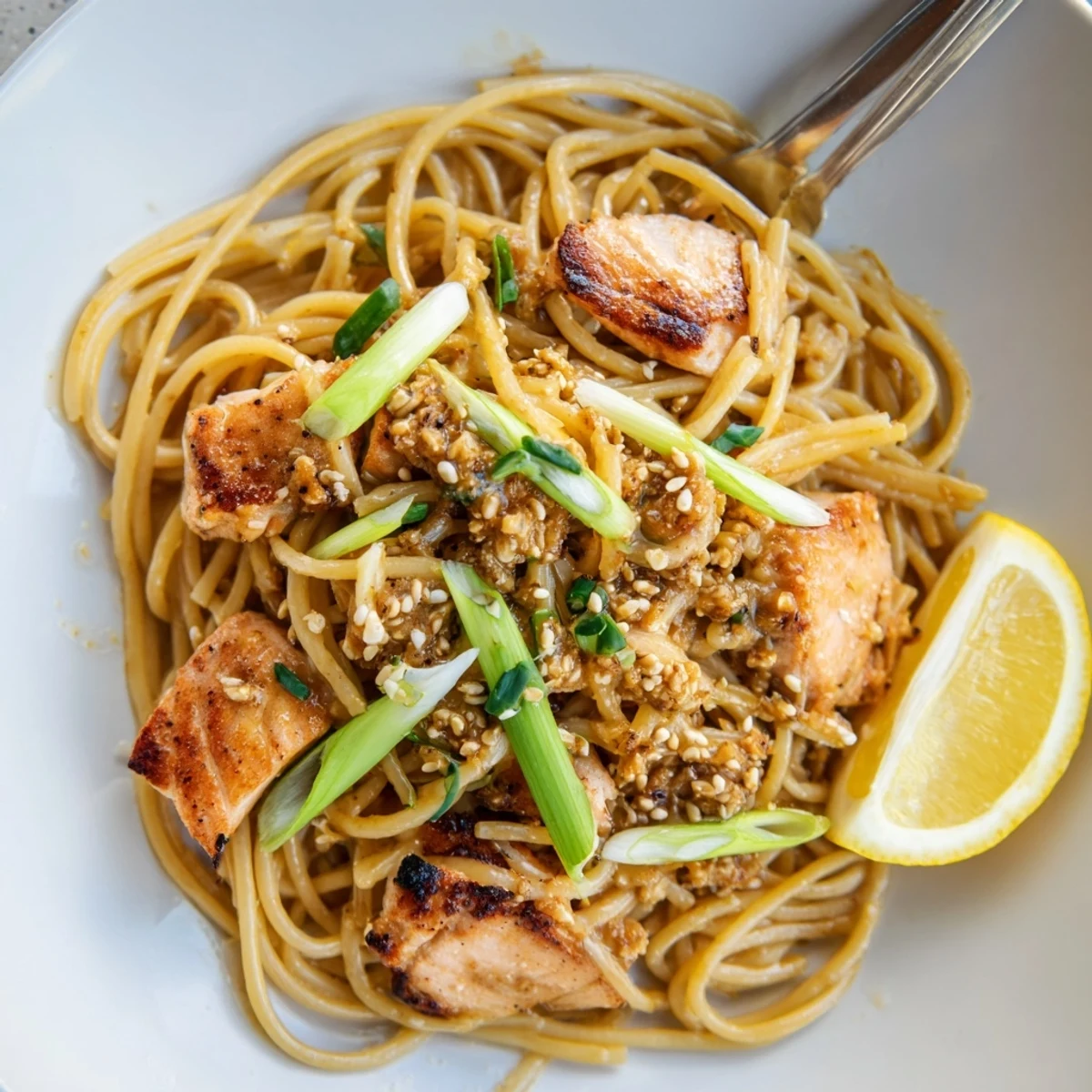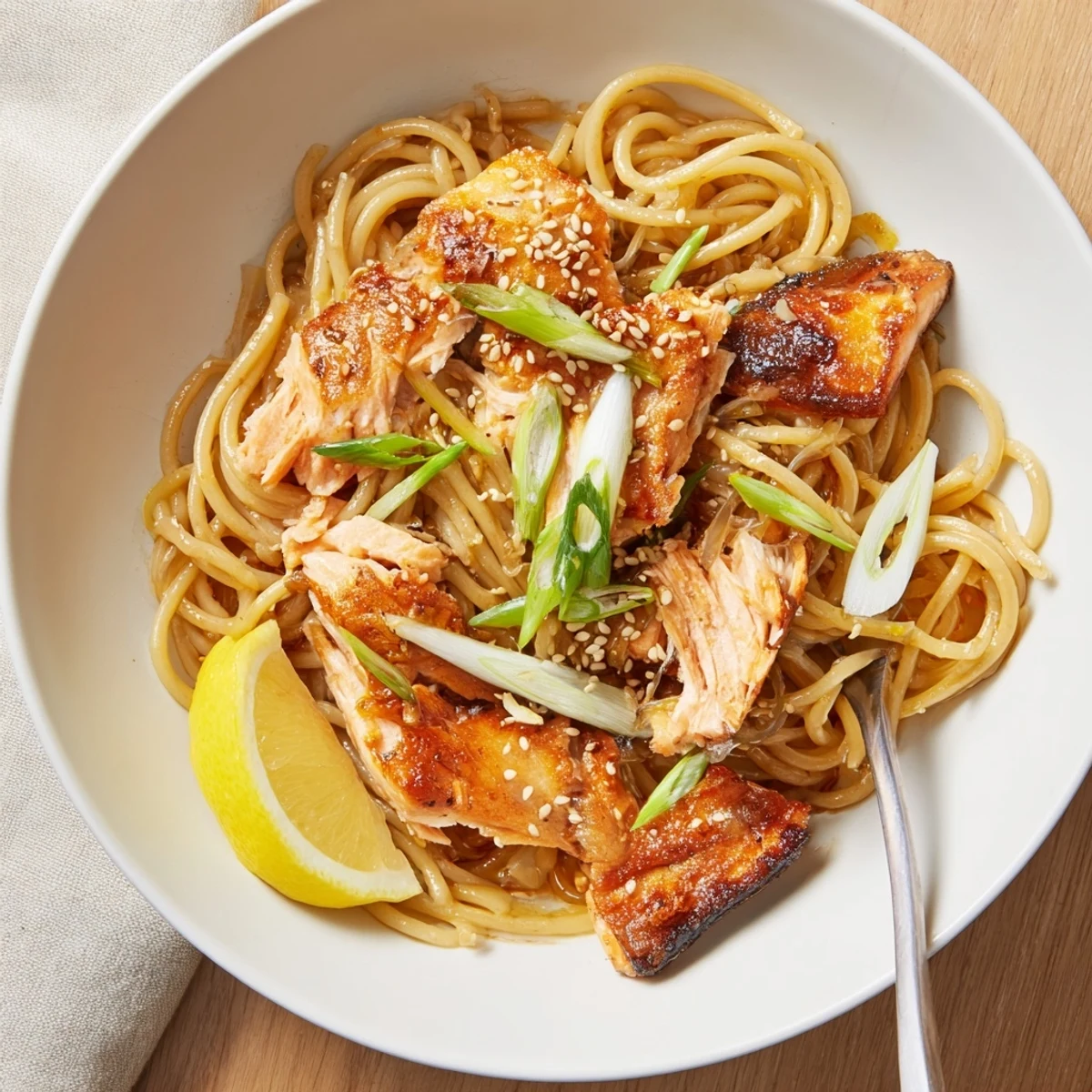 Save
Save A fusion pasta dish featuring crispy pan-seared salmon, al dente spaghetti, and a savory Japanese-inspired sauce with soy, mirin, and fresh scallions.
I first created this recipe when experimenting with classic pasta and Japanese sauces, and it became a favorite for its delicious taste and versatility.
Ingredients
- Salmon fillets: 4 skin-on, about 150 g each
- Spaghetti: 350 g
- Vegetable oil: 2 tablespoons
- Garlic: 3 cloves, finely minced
- Scallions: 2, thinly sliced (plus extra for garnish)
- Soy sauce: 3 tablespoons
- Mirin: 2 tablespoons
- Sake: 1 tablespoon (optional)
- Unsalted butter: 1 tablespoon
- Sesame oil: 1 teaspoon
- Toasted sesame seeds: 1 tablespoon
- Lemon wedges: optional, for serving
Instructions
- Cook Pasta:
- Bring a large pot of salted water to a boil and cook the spaghetti until al dente. Drain, reserving ½ cup of pasta water.
- Season Salmon:
- Pat salmon fillets dry and season lightly with salt and pepper.
- Pan-fry Salmon:
- Heat vegetable oil in a large skillet over medium-high heat. Place salmon skin-side down and cook for 3–4 minutes until skin is crispy. Flip and cook for 2–3 minutes until just cooked through. Remove salmon and set aside.
- Sauté Aromatics:
- In the same skillet, reduce heat to medium. Add garlic and half the scallions, sautéing for about 1 minute until fragrant.
- Make Sauce:
- Add soy sauce, mirin, sake (if using), and butter to the skillet, stirring until butter melts and sauce thickens.
- Combine Pasta and Sauce:
- Add drained pasta to the skillet, tossing to coat. Use reserved pasta water as needed to loosen the sauce. Drizzle with sesame oil.
- Add Salmon:
- Flake salmon into large pieces and gently fold into pasta, or serve whole fillets on top.
- Serve:
- Divide among plates, sprinkle with remaining scallions and toasted sesame seeds. Serve with lemon wedges if desired.
 Save
Save This dish always reminds me of a Japanese restaurant meal enjoyed with family, and it is a favorite request on weekend nights.
Required Tools
Large pot, skillet, tongs, knife, and cutting board are all recommended for preparing this dish efficiently.
Notes
For extra umami, add a tablespoon of miso paste to the sauce. Substitute with udon or soba noodles for variety. Pair with white wine or chilled sake.
Nutritional Information
Calories: 525, Total Fat: 20 g, Carbohydrates: 52 g, Protein: 33 g per serving.
 Save
Save Enjoy this fusion salmon pasta for a delightful twist on traditional comfort food, perfect for sharing with friends and family.